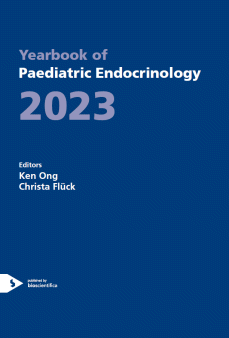ey0020.11-5 | Diabetes | ESPEYB20
11.5. Global incidence, prevalence, and mortality of type 1 diabetes in 2021 with projection to 2040: a modelling study
GA Gregory , TIG Robinson , SE Linklater , F Wang , S Colagiuri , C de Beaufort , KC Donaghue , , International Diabetes Federation Diabetes Atlas Type 1 Diabetes in Adults Special Interest Group, , DJ Magliano , J Maniam , TJ Orchard , P Rai , GD Ogle
ey0020.11-6 | Diabetes | ESPEYB20
11.6. Treatment of diabetic ketoacidosis with subcutaneous regular insulin in a non-ICU setting is effective and economical: A single-center experience
A Ayyavoo , A Ravikulan , R Palany
ey0020.11-7 | Diabetes | ESPEYB20
11.7. Survival of children and youth with type 1 diabetes mellitus in Tanzania
ES Majaliwa , L Minja , J Ndayongeje , K Ramaiya , SG Mfinanga , BT Mmbaga
ey0020.11-8 | Diabetes | ESPEYB20
11.8. Insulin thermostability in a real-world setting
S Pendsey , S James , TJ Garrett , AB Nord , S Pendsey , D Malmodin , G Karlsson , J Maniam , MA Atkinson , G Forsander , GD Ogle
ey0020.11-9 | Diabetes | ESPEYB20
11.9. Global burden of type 2 diabetes in adolescents and young adults, 1990-2019: systematic analysis of the Global Burden of Disease Study 2019
J Xie , M Wang , Z Long , H Ning , J Li , Y Cao , Y Liao , G Liu , F Wang , A Pan
ey0020.11-10 | Diabetes | ESPEYB20
11.10. Type 1 diabetes in diverse ancestries and the use of genetic risk scores
MJ Redondo , CR Gignoux , D Dabelea , WA Hagopian , S Onengut-Gumuscu , RA Oram , SS Rich
ey0020.11-11 | Diabetes | ESPEYB20
11.11. The phenotype of type 1 diabetes in sub-Saharan Africa
JC Katte , TJ McDonald , E Sobngwi , AG Jones




